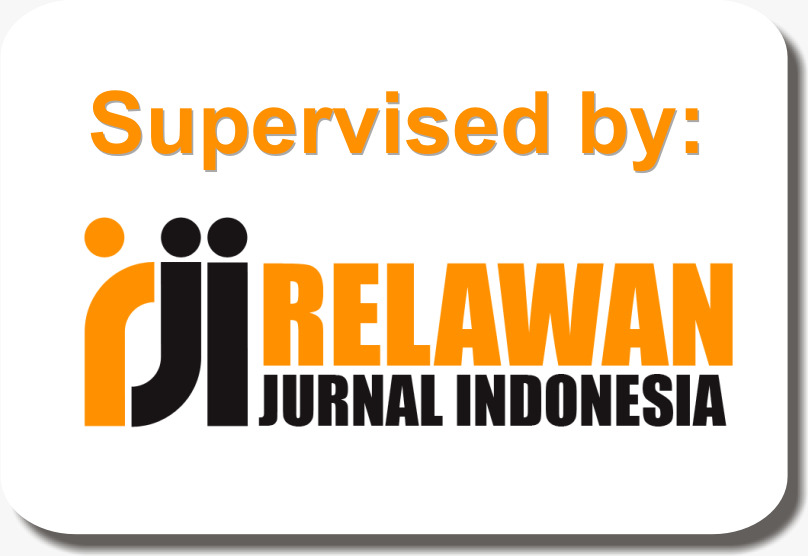Perbandingan Fitur Ekstraksi Untuk Klasifikasi Emosi Pada Sosial Media
Abstract
Emotions are complex conscious experiences characterizing mental states, such as excitement, anger, love, fear, and so on, as part of important human nature. Nowadays, many people express themselves as a reflection of their personality using social media. Social Media grows and becomes a method for social interaction and information sharing. Based on that, researchers tried to use social media data to classify someone's emotions. Emotional detection of text from social media is a field of research that is gaining a high interest, especially for the sake of emotional analysis. To be able to classify such emotions, researchers use comparative feature comparison and algorithms classification. The comparison of features in this research is the extraction features TF-IDF and N-gram which are then classified using Naïve bayes algorithm. However, before the extraction feature is applied, there is a pre-processing text technique using several methods: Case Folding, Stopword Removal, and Stemming. Based on this research, techniques of extraction features in this research generating the highest accuracy value after the classification method is the TF-IDF with an accuracy value of 80%, 98% for the highest value of precision in measurement of “pleasure” emotion, 99% for the highest recall value is in “happy” emotion, and 95% for the highest F1-score value in “pleasure” emotion.
Keywords
Full Text:
PDFReferences
Al-Saaqa, S., Abdel-Nabi, H., & Awajan, A. (2018). A Survey of Textual Emotion Detection. 2018 8th International Conference on Computer Science and Information Technology, CSIT 2018, 136–142. https://doi.org/10.1109/CSIT.2018.8486405
C, A. R., & Lukito, Y. (2017). Deteksi Komentar Spam Bahasa Indonesia Pada Instagram Menggunakan Naive Bayes. Jurnal ULTIMATICS, 9(1), 50–58. https://doi.org/10.31937/ti.v9i1.564
Dandannavar, P. S., Mangalwede, S. R., & Kulkarni, P. M. (2018). Social Media Text - A Source for Personality Prediction. Proceedings of the International Conference on Computational Techniques, Electronics and Mechanical Systems, CTEMS 2018, 62–65. https://doi.org/10.1109/CTEMS.2018.8769304
Deshpande, M., & Rao, V. (2018). Depression detection using emotion artificial intelligence. Proceedings of the International Conference on Intelligent Sustainable Systems, ICISS 2017, (Iciss), 858–862. https://doi.org/10.1109/ISS1.2017.8389299
Devita, R. N., Herwanto, H. W., & Wibawa, A. P. (2018). Perbandingan Kinerja Metode Naive Bayes dan K-Nearest Neighbor untuk Klasifikasi Artikel Berbahasa indonesia. Jurnal Teknologi Informasi Dan Ilmu Komputer, 5(4), 427. https://doi.org/10.25126/jtiik.201854773
Fauzi, M. A., Arifin, A. Z., Kom, S., Kom, M., Yuniarti, A., Kom, S., & Sc, M. C. (2015). Term Weighting Berbasis Indeks Buku Dan Kelas Untuk Perangkingan Dokumen Berbahasa Arab. Lontar Komputer : Jurnal Ilmiah Teknologi Informasi, 5(2), 110–117. https://doi.org/ISSN: 2088-1541
Gencosman, B. C., Ozmutlu, H. C., & Ozmutlu, S. (2014). Character n-gram application for automatic new topic identification. In Information Processing and Management (Vol. 50). https://doi.org/10.1016/j.ipm.2014.06.005
Indrayuni, E., & Wahyudi, M. (2015). Penerapan Charachter N-Gram Untuk Sentiment Review Hotel Menggunakan Algoritma Naive Bayes. Konfrensi Nasional Ilmu Pengetahuan Dan Teknologi (KNIT), 88–93.
Olivita, D. (2016). Perbandingan Klasifikasi Tugas Akhir Mahasiswa Jurusan Teknik Informatika Menggunakan Metode Naïve bayes Classifier dan K-Nearest Neighbor. Sains, 14(1), 79–85. https://doi.org/10.1002/mame.201200226
Rachmat C, A., & Lukito, Y. (2016). Klasifikasi Sentimen Komentar Politik dari Facebook Page Menggunakan Naive Bayes. Jurnal Informatika Dan Sistem Informasi Universitas Ciputra, 02(02), 26–34. https://doi.org/10.1080/10408398.2013.809690
Robertson, S. (2004). Understanding inverse document frequency: On theoretical arguments for IDF. Journal of Documentation, 60(5), 503–520. https://doi.org/10.1108/00220410410560582
Rohman, A. N., Utami, E., & Raharjo, S. (2019). Deteksi Kondisi Emosi pada Media Sosial Menggunakan Pendekatan Leksikon dan Natural Language Processing. Eksplora Informatika, 9(1), 70–76. https://doi.org/10.30864/eksplora.v9i1.277
Santosa, B. (2007). Data Mining Teknik Pemanfaatan Data Untuk Keperluan Bisnis. yogyakarta: Graha Ilmu.
Widyawati, & Sutanto. (2019). Perbandingan Algoritma Naïve bayes Dan Support Vector Machine ( Svm ). 3(2), 178–194.
DOI: http://dx.doi.org/10.30646/sinus.v18i2.457
Refbacks
- There are currently no refbacks.
STMIK Sinar Nusantara
KH Samanhudi 84 - 86 Street, Laweyan Surakarta, Central Java, Indonesia
Postal Code: 57142, Phone & Fax: +62 271 716 500
Email: ejurnal @ sinus.ac.id | https://p3m.sinus.ac.id/jurnal/e-jurnal_SINUS/
ISSN: 1693-1173 (print) | 2548-4028 (online)

This work is licensed under a Creative Commons Attribution-NonCommercial-ShareAlike 4.0 International License.













